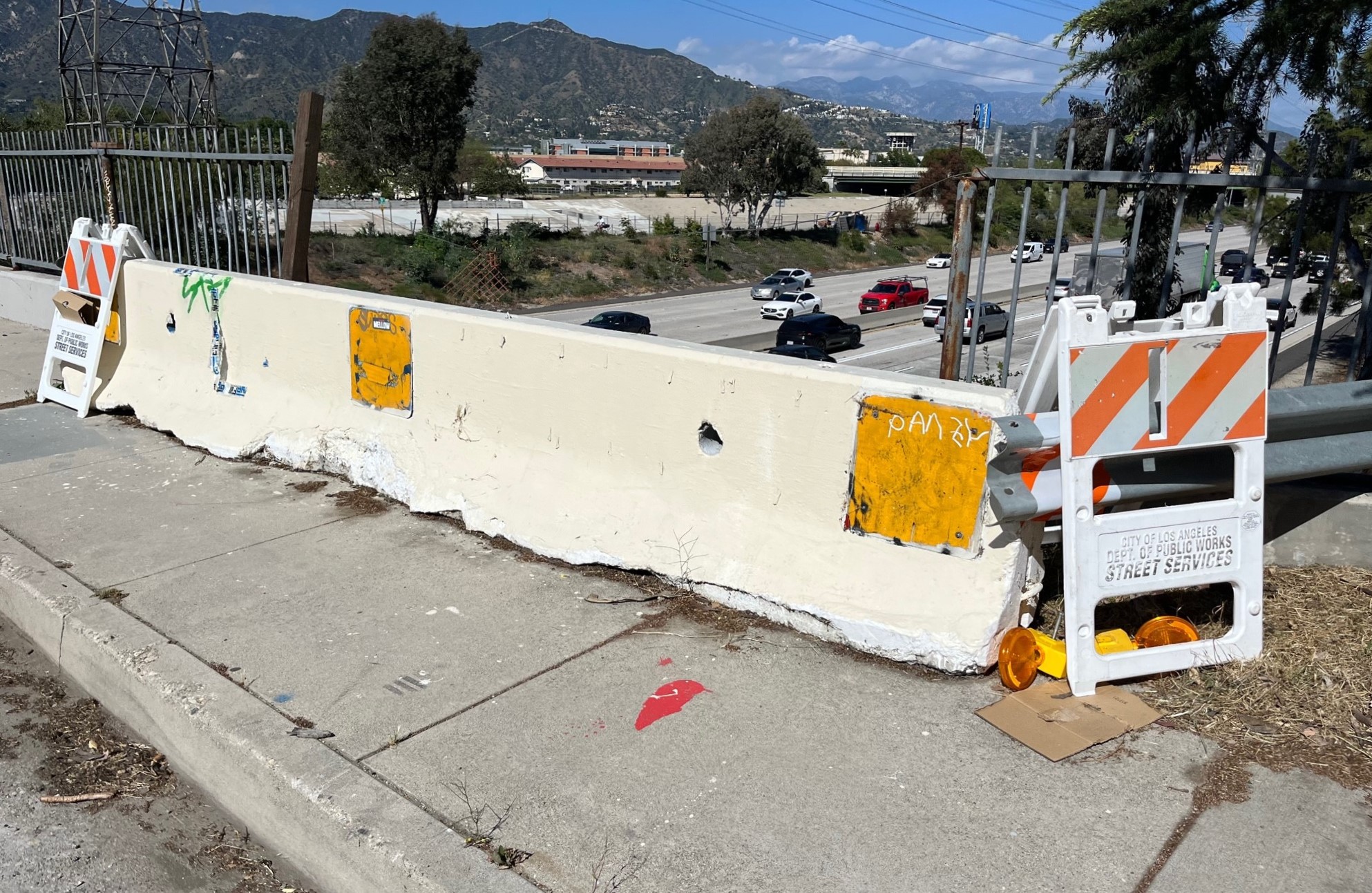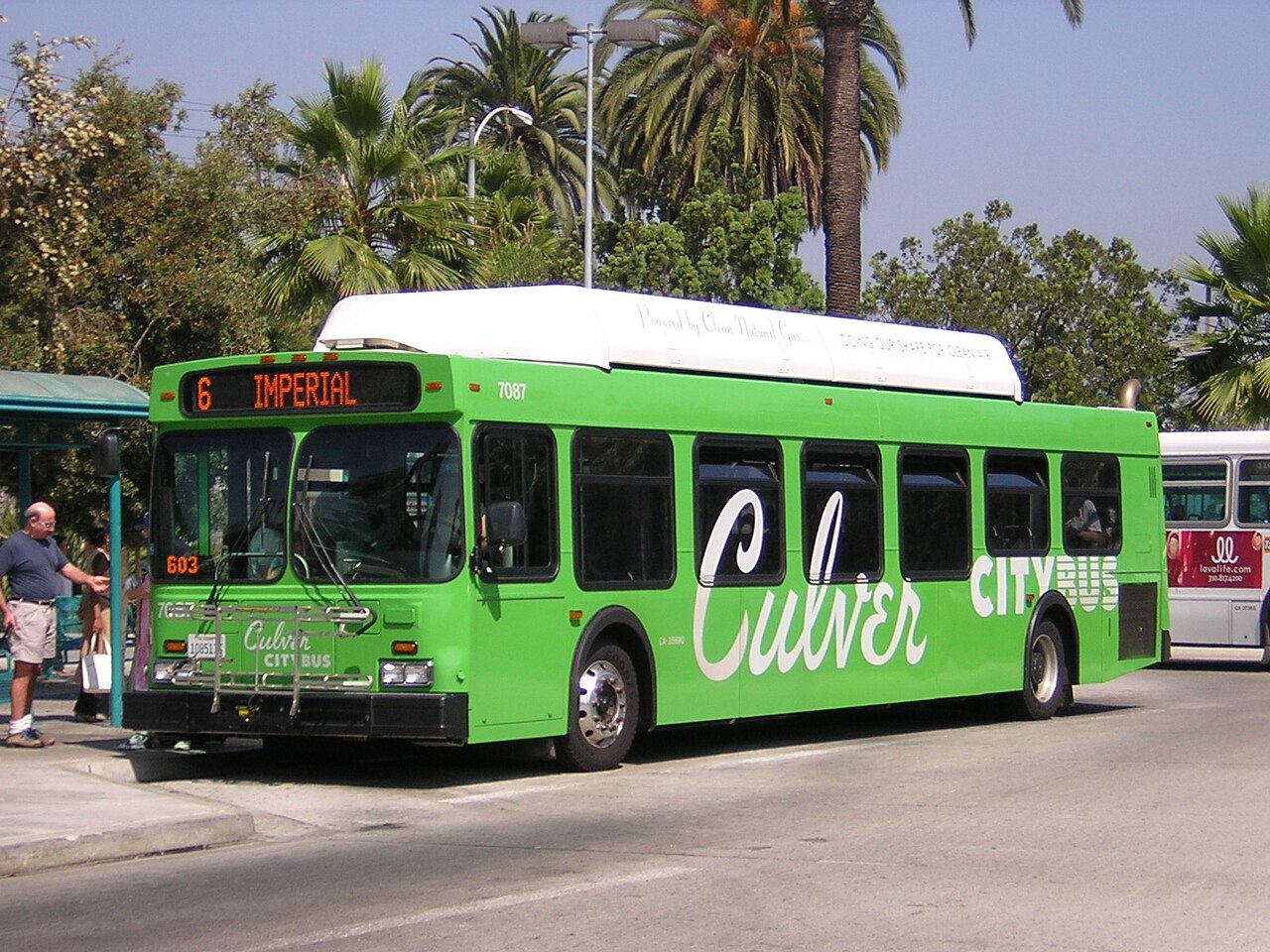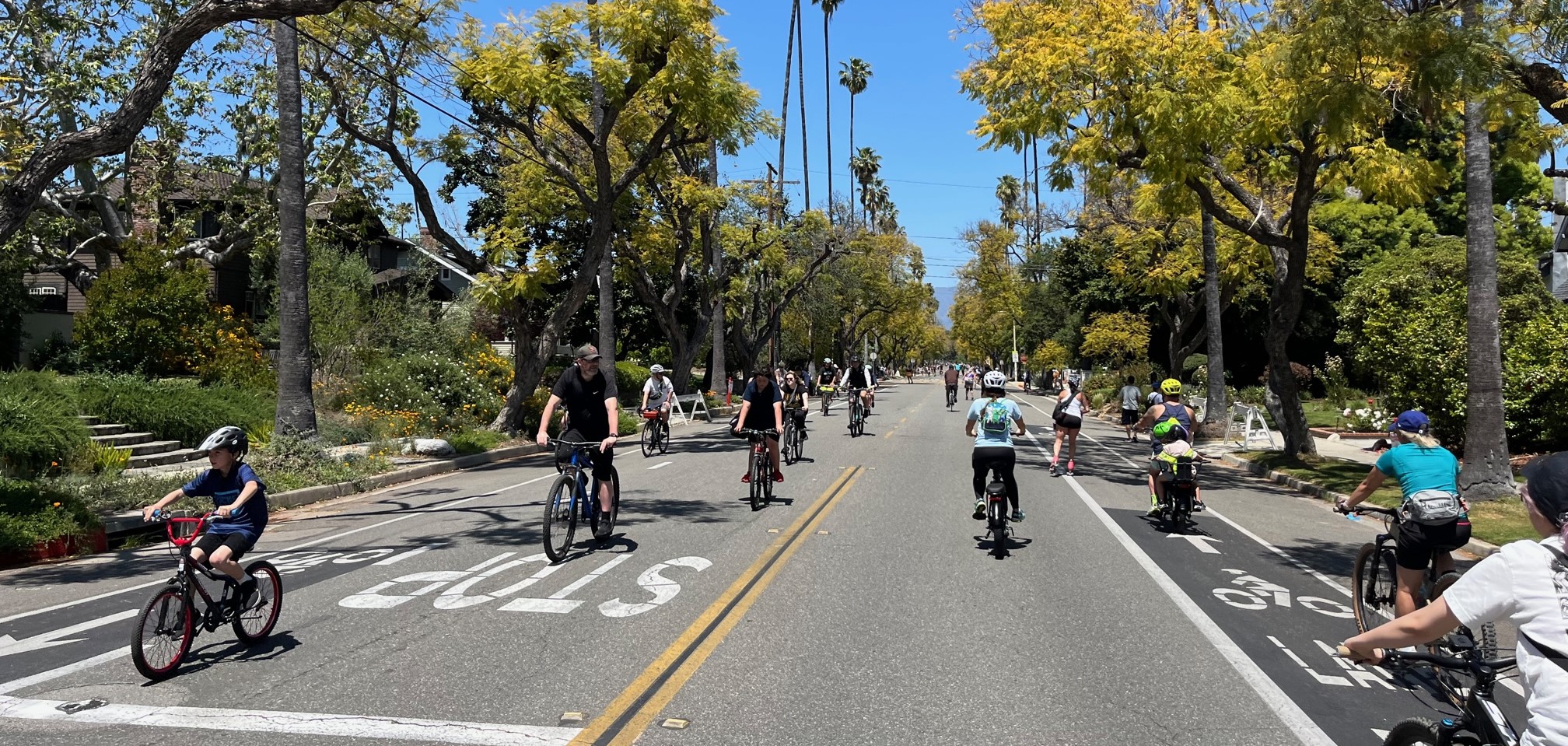Successful Buildings For A Better City
12:44 PM PST on February 17, 2017
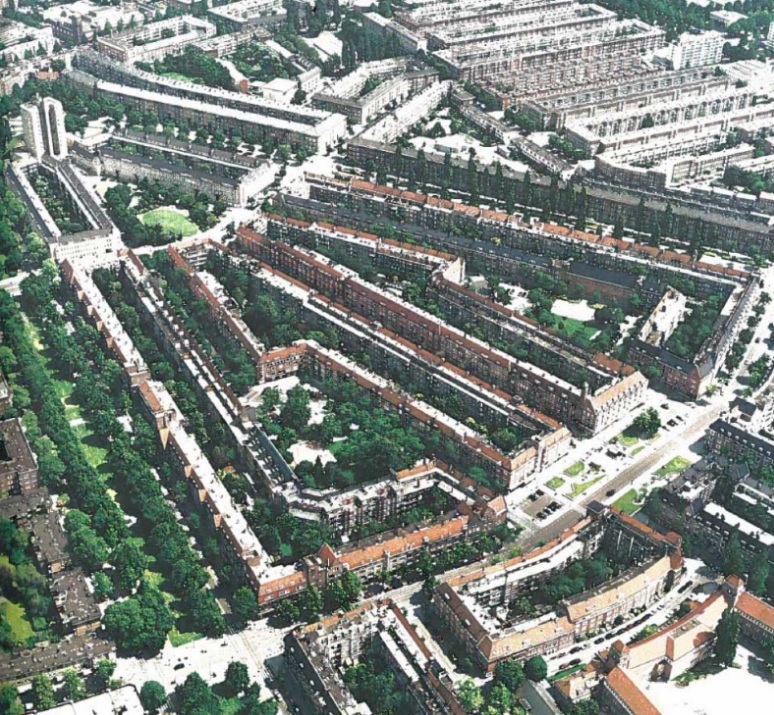
A part of Amsterdam – from Atlas of the Dutch Urban Block
There is a tug of war going on between fans of Measure S, which is threatening to stop L.A.’s urban evolution in March; and growth proponents who all too readily embrace tower construction wherever a spot of land exists to build them. But Angelinos, meanwhile, are uneasy about both and fear that neither vision will create the better city we deserve.
Surprisingly, little effort is spent on promoting what that better city should be like. L.A. badly needs to envision a different way forward.
To start, we should investigate good solutions wherever they already exist. There are numerous international city rankings, with a variety of metrics. The Economist annually lists the world's most livable cities, the Mercer report does too, and Arcadis is ranking cities by their sustainability. L.A. is not leading by any measure. Moreover, what we consistently find is that the top cities do not look like us - they look like the places many of us visit on vacation. Even more aggravating, they are statistically solving problems we dare not tackle. The most livable cities are often quite a bit denser than our cities, but they also have generous open spaces, vibrant business communities, and an adequate housing supply, sometimes even at sustainable prices we cannot even imagine.
In L.A., we think of a city as a vast region of single family houses with skyscrapers in the middle, but to the rest of the world, those two building types represent only the extremes to be used in their cities rather sparsely. Those cities mostly consist out of what we call “the missing middle buildings”. This article is devoted to two examples out of the vast catalog of those building types, because they create so much urban fabric elsewhere but do not exist in SoCal; even worse, they may be illegal for us to build at this time.
Row-houses
There are lots of row-houses in San Francisco; and in our older cities back east; and in the rest of the world. But not for lack of trying, only maybe a dozen or so true row-houses were found to exist in LA. There are about 5 more of them in Santa Barbara.
In the 1930s, L.A. banned row houses by passing a yard ordinance recommended by the FHA. Before the ordinance was passed, the city planning commission commented, “there is no regulation to prevent the development in sunny Los Angeles of the undesirable row houses so characteristic of densely populated Eastern cities." Our lack of row-houses is a self-inflicted wound. We threw out the building type because of bad design, rather than enforce standards to correct bad projects.
Later, we tried to bring row-houses back through townhouse developments so common on the west side of town. But this compromise does not do the building type justice. A row-house is like a detached single family house, adjusted to a city. A townhouse is a condo. This difference is important. In a townhouse, you are never the master of your castle. There is a legally required Home Owners Association with statutory authority that will manage parts of your property, and in some cases, they might prevent you from adding even small individual touches to your own home.
A genuine row-house is a fee simple property and should come without private party design restrictions. You should be able to do with your row-house everything you can do with a single family house.
There has also been another recent row-house rebirth in the form of small lot subdivisions. Sadly this too falls short of what an urban house could be and often looks as if a simple box apartment was lifted up on top of a parking garage with all the ground floor space given up to driveways and parking. Row-houses use land very efficiently. There is often little, if any, front yard and never a side yard. However, there is a rear yard adjacent to a living space. This may be an urban house, but there is no reason not to have one’s own private garden.

When we talk about the American dream, we usually mean home ownership. Suburbia is an attempt on this by giving everybody a tiny slice of country life; four walls one can walk around. But there is another way. A row-house is its own structure with its own structural walls. This means you can tear one house down and the one next to it will remain unaffected. Shared walls are not an implied feature of row-houses. They are the result of late 19th century developers cutting corners.
Row houses have one big advantage over the detached houses of our suburbs; they offer palatable solutions to our housing shortage. One can fit many more row-houses into the same amount of land while retaining the look and feel of a residential neighborhood. Row-houses can achieve the minimum density required to run efficient, economically self-sustaining public transit. Once people stop depending on cars, they embrace alternate driving arrangements without vehicle ownership obligations - such as storing your vehicle, which then allows for relaxed parking requirements; and that frees up the ground floor to be used again by us, the humans.
Imagine row-houses in your neighborhood, ideally, near transit stations. These buildings are never higher than max. 3-4 stories, and perfectly mediate between an urban core and a single family neighborhood. They generate the casual streetscapes of our older cities, where people can meander to their transit stops. They are the ideal single family house type near transit, and as such, they are the workhorses of a comfortable city.

Perimeter Apartment Blocks
Not everybody can, nor would choose to live in a house. A city needs multiple types of dwellings for a variety of situations and income levels; including suburban homes, duplexes, quadplexes, row-houses, walk up apartments, and finally multi-story flats. European cities rely on an apartment building type that offers many advantages over how we build here. It is called a ‘perimeter apartment block’.
When we look at a typical built-out US city block, we know that there is little to no open space left inside that block.
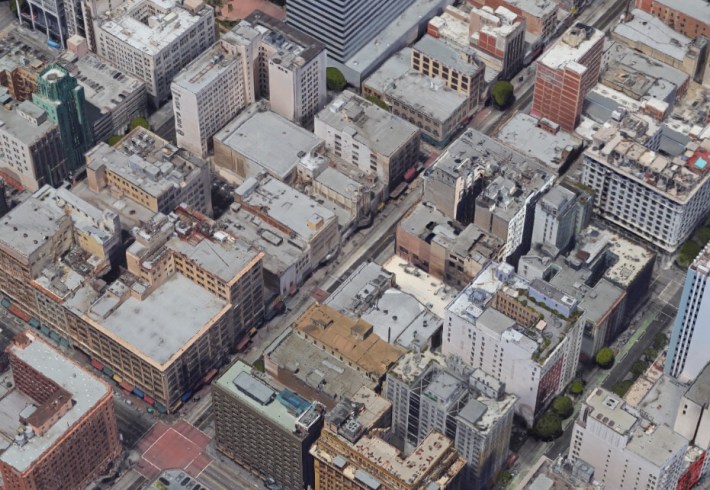
But when we compare this to a solid looking European building block, we might be surprised to learn that buildings only line the edges against the streets, but that inside the block there is a green courtyard.
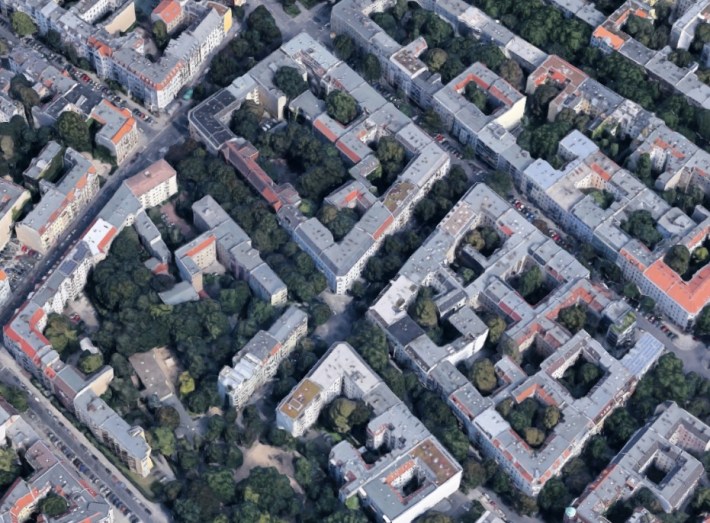
Europeans like sleeping with open windows facing quiet inner semi-private courts; but people also enjoy looking out into their street during the day. Thus, the standard European apartment offers this double exposure, with the living room facing the street and the bedrooms facing the garden interior. The courtyard is precious to people; they accept buildings squeezed tight against the street edge in order to keep the inside as open as possible.
US apartment design rarely offers this double exposure. When you choose your apartment you pick on the left or the right side of the corridor, but you cannot have both. If you selected the street side, this then means all your rooms will be exposed to street noise, and you won’t want to sleep with your windows open. Thus, in typical American apartments air circulates through mechanical systems, which makes the building more expensive to build and operate. Apartments in euro-perimeter blocks are mostly passively cross ventilated through windows on two opposite sides of a building; there is no need for a fan to vent out old stale air; just open the window on both opposing sides, and voila!
Passive ventilation used to be common in older, lower apartment buildings; but these days, such buildings are no longer being constructed, unless they are part of an affordable housing project. We do not have a method to build higher buildings while still offering passive ventilation for the apartments; and yet, this is completely possible regardless of building height. In typical Chinese housing construction, for instance, passive ventilation is available even in the highest of their towers. It is also the most common form of ventilation for a European city apartment.
As a building typology, these block-edge buildings are called “primary vertical circulation types”, and they are fiercely efficient for developers. Without long, monotonous interior corridors, your front door is right off your stair landing; and you will share that landing with 1-3 neighbors. In this more intimate arrangement, people are more likely to know their neighbors and form social bonds than in buildings with anonymous front doors along long corridors.
The vertical arrangement has also another advantage – it makes the building footprint quite small. This building type can easily fit an infill lot; there is no need for a developer to aggregate parcels in order to build one larger project. Also, this concept scales up easily. On a compact site, one might only fit only one or two ‘modules’; but on a large site with a long street wall, one can simply add them like pearls on a string.
Dan Solomon, a founder of the New Urbanism, wrote that “the Dutch did this the best”. (See image at top of post)
But the Dutch are far from the only ones. This is a long standing traditional building type still favored today. The design closest to this here is the often-maligned podium type housing. Typically, five stories of building surround a common protected open space on top of the parking garage. This is less than ideal for the quality of the individual apartment for the above reasons, but it is a good building type to build urban fabric.
Perimeter blocks were invented by the Romans who built compact army camps in their occupied territories. People later found that arrangement so functional that they continued to build their cities in this fashion - right up until 100 years ago. Then everybody started to spread out to make rooms for cars. But since most cities had retained old fashioned dense perimeter blocks, they soon recognized the advantages of their urban tradition and in recent years European developers returned to what they have known works so well.
Decades ago the inner courtyard spaces were often used to park cars, but these quiet city enclaves have been rediscovered as urban oasis. Today, one is most likely to find children playgrounds, child care facilities, restaurants, shopping, gardens or any other outdoor community functions there, in the middle of the city, but safe and unencumbered by automobiles.
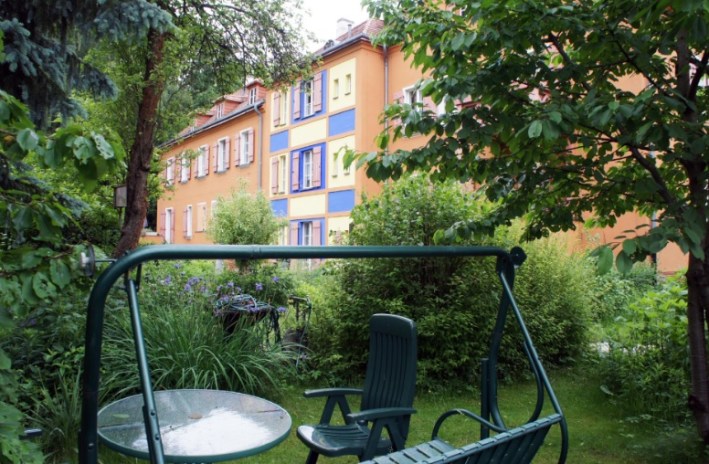
As American architects, we often envy what we see in international magazines. For instance, there was a competition for an urban block in Switzerland won by the famous Dutch firm MVRDV. The Urban Hybrid Micro City they propose would be a good solution in any city, even here in L.A. Or they also designed a new part of the town of Leyden in the Netherlands, using row-houses in innovative ways. Projects like these cannot happen here because we lack the understanding, and the regulatory foundation to design the basic building types consisting of row-houses and block edge apartments. If we had those ingredients available here, we too could design and build projects like this.
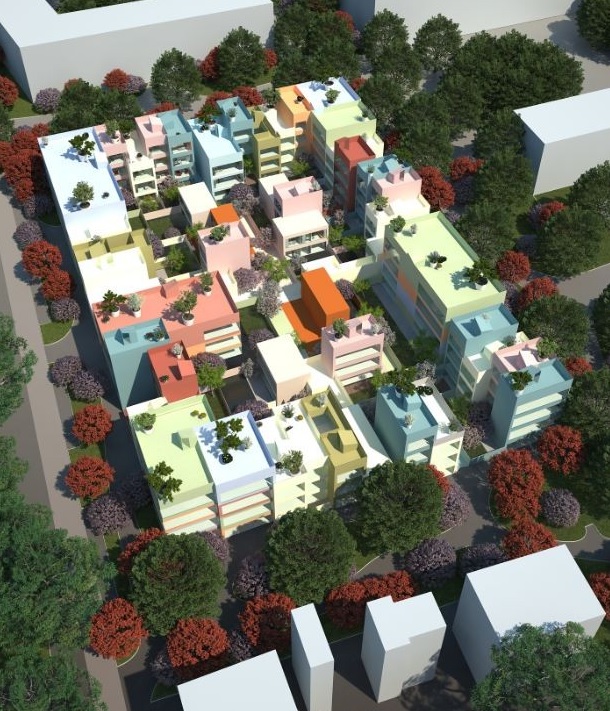
Our job as architects is to create places that can truly be homes in a metropolis. This is especially true and urgent in L.A. today. Through our buildings and our cities, we are literally shaping our society.
The public resistance we are feeling against change is partially because we, the design profession, have not offered better ways to live in our cities, in the same ways the suburbs once appealed to the masses. If we want better cities, we will need to create them with different ingredients. There is a whole range of building types out there and we only employ a very small subset of them here locally. Both row-houses and perimeter apartment block buildings are part of the “missing middle”. They are also the core ingredients of cities aiming to solve housing shortages with quality of life and access to open space. We should study what works elsewhere, and if necessary, change our zoning and building codes to allow it here too.
Bjarke Ingels stated recently that “the whole world is really a showcase of best practices”. If we can learn from the great urban variety around the world, we will solve our local impasse easily. Then the world will want to learn from us, again, too.
Gerhard W. Mayer practices architecture/urban design in Los Angeles. Born in Vienna, he has worked all over the globe for the past 30 years. Gerhard is a local activist for transformation towards walkable, transit connected communities. Gerhard also served as chair of the LA-AIA’s Urban Design Committee.
Stay in touch
Sign up for our free newsletter
More from Streetsblog Los Angeles
Freeway Drivers Keep Slamming into Bridge Railing in Griffith Park
Drivers keep smashing the Riverside Drive Bridge railing - plus a few other Griffith Park bike/walk updates
This Week In Livable Streets
Bike Month, Hyperion street safety, Eastside rail plans, Pasadena transit, CicloIRVINE, Culver City bus service, and more
Active Streets Mission-to-Mission – Open Thread
Tens of thousands of participants biked, walked, skated and scootered on car-free streets through San Gabriel, South Pasadena and Alhambra

